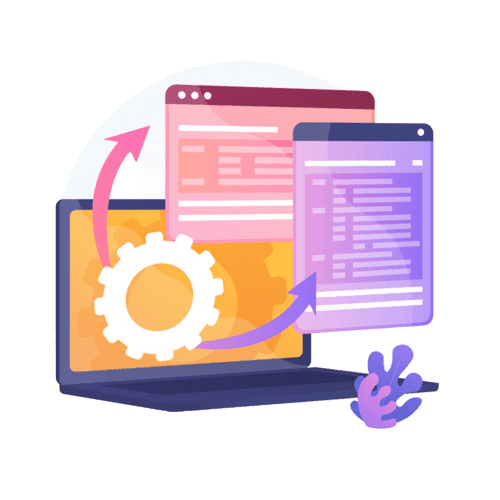Preparing for a process audit involves structured planning, clear communication, and employee engagement. Key practices include maintaining audit readiness, conducting pre-audit assessments, using process mapping tools, and ensuring proper documentation control. Engaging process owners and fostering continuous improvement enhances audit success while addressing common challenges like resource constraints and stress.
The Evolution of SPICE: A Comprehensive Journey Through Process Assessment Standardization
A groundbreaking initiative, SPICE (Software Process Improvement and Capability dEtermination) paved the way for standardized process assessments. This retrospective explores its journey from inception to global adoption, highlighting the development of ISO/IEC 15504 and its lasting impact on software engineering and other industries worldwide.

The SPICE (Software Process Improvement and Capability determination) project, established in 1993, was a pioneering effort in the realm of software process assessment and improvement. This initiative aimed to establish a standardized framework that organizations could use to evaluate and enhance their software development processes. The project culminated in the ISO/IEC 15504 standard, widely known as SPICE, which has had a profound impact on the software engineering industry and beyond.
Origins and Development of SPICE
The impetus for SPICE’s development emerged from the needs of large-scale software acquirers, particularly in the defense and telecommunications sectors. These industries required a robust mechanism to assess the capabilities of their software development processes. Prior to SPICE, various process assessment methods were in use, such as the Capability Maturity Model for Software (CMM) developed by the Software Engineering Institute (SEI) for the US Department of Defense. However, these methods lacked a unified, international standard.
The UK Ministry of Defense, recognizing the need for a harmonized approach to software process assessment, initiated a series of studies that eventually led to the establishment of a standard. This effort was formalized in 1993 when the International Organization for Standardization (ISO) and the International Electrotechnical Commission (IEC) adopted the proposal and set up a working group (WG10) to develop the standard. The SPICE project was born out of this working group, with three primary goals:
- Assist in the development of initial working drafts for the standard.
- Undertake user trials to gain empirical data and refine the standard.
- Promote awareness and adoption of the evolving standard.
By 1998, the first version of the standard was released as a Technical Report (ISO/IEC TR 15504). Over the next few years, through a series of user trials and refinements, the final version of the standard was published in five parts between 2003 and 2006.
Achievements of SPICE
The SPICE project made significant contributions to the field of process assessment. One of its primary achievements was the formalization of a discipline for process assessment. At the time, process assessment techniques were varied and lacked consistency. The SPICE framework provided a structured approach to assessing the capability of software development processes against a standardized model.
A Discipline for Process Assessment
ISO/IEC 15504 defined a disciplined approach to process assessment, prescribing minimum requirements for inputs, outputs, resources, and activities. It introduced a strategy for data collection and established the importance of basing process capability ratings on objective evidence. This approach significantly influenced other process assessment frameworks, such as the Standard CMMI Appraisal Method for Process Improvement (SCAMPI).
Measuring Process Capability
SPICE introduced a comprehensive and generic model-based approach for evaluating process capability. This model compared evidence of actual performance against a predefined model of capability. The key elements of the SPICE framework include:
- Process Reference Model (PRM): Defines the processes to be assessed, describing each process in terms of its purpose and outcomes.
- Measurement Framework: Provides a scale for evaluating process capability based on specific attributes.
- Process Assessment Model (PAM): A two-dimensional model that combines the process dimension (PRM) with the capability dimension (Measurement Framework).
The framework’s modularity and flexibility made it applicable across various domains, allowing organizations from different industries to adopt and adapt it to their specific needs.
Empirical Studies: SPICE Trials
The SPICE Trials, conducted between 1995 and 1998, were a unique aspect of the project. These trials were designed to empirically evaluate the emerging ISO/IEC 15504 standard. The trials were divided into three phases:
- Phase 1 (1995): Focused on validating the design decisions in the initial draft documents and testing their usability.
- Phase 2 (1996-1998): Evaluated the ISO/IEC PDTR 15504 documents (SPICE version 2) and provided guidance on applying the standard effectively.
- Phase 3: Intended to continue until the full publication of the international standard but was eventually abandoned due to resource constraints.
Data collected during the trials was invaluable in refining the standard. A total of 70 assessments were conducted across 44 organizations, covering 169 projects and 691 process instances. The results of these assessments provided empirical evidence supporting the utility of the standard and identified areas for improvement.
Validating the Standard
The SPICE trials provided several important insights into the reliability, validity, and predictive power of the ISO/IEC 15504 standard.
Reliability of Process Capability Dimension
Reliability in process assessment is crucial to ensure that the same measurement procedure yields consistent results. Studies conducted during the SPICE trials found that the process capability measure in ISO/IEC 15504 exhibited high internal consistency, with Cronbach’s alpha coefficients indicating strong reliability. The two primary dimensions—Process Implementation (levels 1-3) and Quantitative Process Management (levels 4-5)—were found to be reliable, with Cronbach’s alpha values of 0.88 and 0.87, respectively.
Predictive Validity
One of the key premises of ISO/IEC 15504 is that higher process capability leads to better project performance and product quality. Empirical studies conducted during the SPICE trials supported this premise, particularly in large organizations. The studies found that higher process capability levels were associated with better performance in terms of budget, schedule, and customer satisfaction.
Impact of SPICE
The publication of ISO/IEC 15504 marked a significant milestone in the field of process assessment. Its impact extended beyond the software industry, influencing various other domains such as aerospace, automotive, and medical device software development.
Understanding Processes
One of the major contributions of SPICE was its approach to defining processes. The standard emphasized that a process could be decomposed into a set of interdependent actions or activities, each aimed at achieving a specific result. This approach allowed for flexibility in how processes were defined and implemented, making it suitable for use across different industries and sectors.
Developing Standards
SPICE set a precedent for the development of future standards by integrating theoretical, definitive, and empirical studies. The SPICE Trials, in particular, highlighted the importance of empirical validation in the standardization process. By involving users in the development and validation of the standard, SPICE ensured that the final product was both technically sound and practically useful.
Adoption
The adoption of ISO/IEC 15504 has been widespread, particularly in Europe and Asia. The standard has been used extensively in industries such as automotive (Automotive SPICE), aerospace (SPICE for SPACE), and medical device software development. The development of domain-specific Process Reference Models (PRMs) and Process Assessment Models (PAMs) has further facilitated its adoption in specialized industries.
Conclusion
Looking to the Future
While the initial focus of SPICE was on software process assessment, the framework has evolved to encompass a broader range of processes. The concept of organizational maturity, for example, has become an important aspect of process assessment. By defining maturity levels based on process capabilities, organizations can better understand their overall performance and identify areas for improvement.
The future of SPICE lies in its continued expansion and refinement. As new industries adopt the standard, there will be opportunities to develop domain-specific models that cater to the unique needs of different sectors. Furthermore, the integration of SPICE with other standards, such as CMMI, will help to create a more cohesive and comprehensive approach to process assessment.
Conclusion
The SPICE project, through its development of ISO/IEC 15504, has made significant contributions to the field of process assessment and improvement. By providing a standardized framework for evaluating process capability, SPICE has helped organizations around the world improve their software development processes and achieve better project outcomes. The empirical validation provided by the SPICE Trials has ensured that the standard is both reliable and effective, and its widespread adoption is a testament to its value. As SPICE continues to evolve, it will undoubtedly remain a key tool for organizations seeking to improve their processes and achieve greater efficiency and effectiveness.
References
- SPICE Trials Report, 2003 – Final Report of Phase 2 of the SPICE Trials: Executive Summary and Detailed Reports of Some of the Studies.
- El Emam, K., 1998 – The internal consistency of the ISO/IEC 15504 software process capability scale. Proceedings of 5th International Symposium on Software Metrics.
- El Emam, K., and Garro, I., 2000 – Estimating the extent of standards use: the case of ISO/IEC 15504. Journal of Systems and Software.
- Jung, H.W., 2003 – Evaluating the internal consistency of ISO/IEC TR 15504 process capability measures. Software Process Improvement and Practice.
Wanna know more? Let's dive in!
Process Audits Explained: A Comprehensive Guide
Process audits are systematic evaluations of organizational processes to ensure compliance, efficiency, and effectiveness. They identify areas for improvement, mitigate risks, and ensure regulatory compliance. This guide explores types, methodologies, benefits, and challenges of process audits, providing a comprehensive understanding of their role in enhancing operational performance.
Step-by-Step Process for Passing Your First ISO Audit with Flying Colors
Preparing for your first ISO audit? This step-by-step guide breaks down everything from documentation and employee training to internal audits and corrective actions. Follow these essential steps to ensure you pass your ISO audit with flying colors and achieve certification success. Start your ISO journey today!
How Technology is Revolutionizing ISO Audits: Digital Tools for Compliance
Digital tools and audit management software are transforming ISO audits by improving accuracy, efficiency, and compliance. Automation, centralized data management, and AI-driven analytics streamline processes, reduce errors, and enhance risk management, making ISO audits more manageable and future-ready for organizations aiming to maintain certification.
What to Expect During an ISO Surveillance Audit: Staying Compliant Year-Round
ISO surveillance audits are essential for maintaining certification and ensuring compliance with international standards. This guide outlines what to expect during these audits, the importance of continuous improvement, and strategies for year-round ISO compliance, helping businesses pass audits effortlessly while enhancing operational efficiency and customer satisfaction.
Top 10 Benefits of Conducting Regular Internal Audits
Conducting regular internal audits before ISO certification offers numerous benefits, including early detection of nonconformities, streamlined audit processes, improved documentation, and cost savings. These audits foster continuous improvement, enhance risk management, boost organizational efficiency, and ensure long-term compliance, setting the foundation for successful ISO certification.
The Ultimate Guide to Preparing for an ISO Audit
Preparing for an ISO audit can be challenging, with common mistakes like poor documentation, insufficient internal audits, and lack of leadership involvement. This guide explores these pitfalls and offers expert tips, an audit readiness checklist, and strategies to ensure a smooth path to successful ISO certification.
Comprehensive Overview of Different Types of Audits
We explore various types of audits, including system, human error, clinical, cybersecurity, and business continuity audits. Each audit plays a unique role in ensuring compliance, improving efficiency, and reducing risks across different industries, helping organizations achieve their quality, safety, and operational goals.
Online Networking and Individual Development: A Deep Dive
Online networking enables global collaboration, transcending geographic limitations for personal and professional development. Through models like T-learning, I-learning, M-learning, and N-learning, individuals engage in knowledge sharing and growth. Effective e-moderation, scaffolded learning, and addressing challenges ensure productive and enriching online development experiences.
Networking and Innovation
Networking plays a crucial role in fostering innovation by enabling firms to share knowledge, access new markets, and pool resources. This article explores how diverse networks, including formal alliances and informal relationships, contribute to innovation while highlighting challenges such as network complexity and potential failures.
Developing a Comprehensive Networking Strategy
Developing a strategic networking plan is crucial for career advancement. By setting clear goals, identifying key contacts, and maintaining meaningful relationships, professionals can unlock hidden opportunities, enhance their brand, and foster valuable collaborations that support long-term growth. Networking is an ongoing process essential for sustained career success.
Networking at Events
Networking is essential for career growth. Success lies in preparation, active engagement, and thoughtful follow-up. By mastering these strategies, you can create meaningful connections at any event, opening doors to opportunities and collaborations that can significantly impact your professional trajectory.












